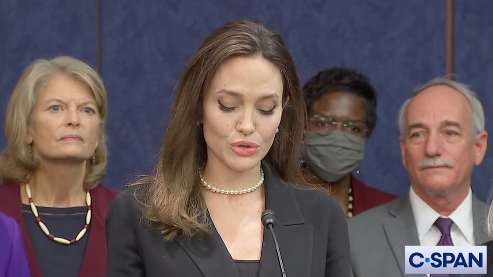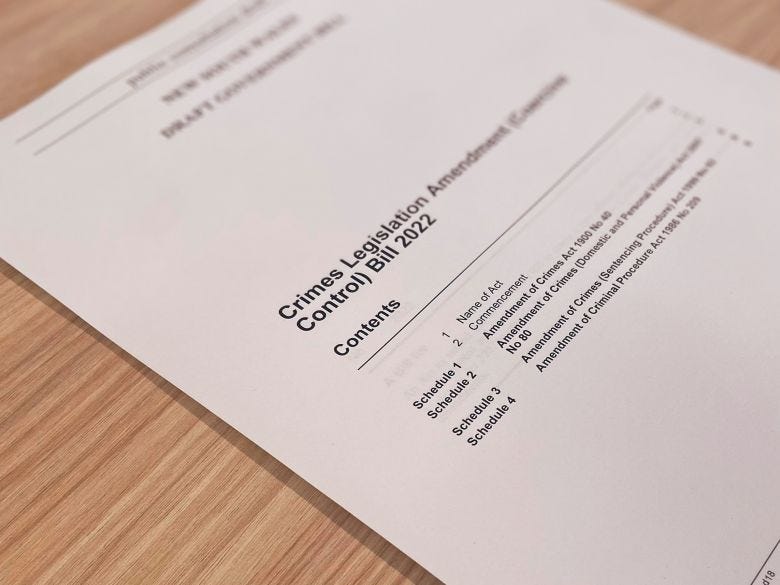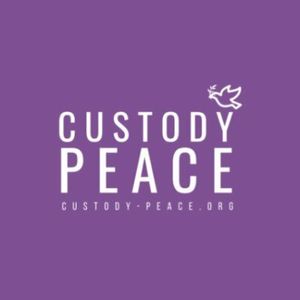
Written with contribution and advisement from Dr. Christine Marie Cocchiola, Doctor of Clinical Social Welfare, Coercive Control Educator/Researcher, and Dr. Emma Katz, Global Coercive Control Expert and Author of “Coercive Control in Children’s and Mothers’ Lives”.
Coercive control has been making headlines this week and for the first time ever was trending on Twitter. — So, what exactly does coercive control mean?
Physical abuse is what most people think of when they hear “domestic violence,” however, there is something deeper at play here. Something that is the foundation of almost all forms of domestic violence: the need for a partner or ex-partner to dominate, assert power, and coercively control their victim. The need for them to “power over” them at all costs.
Coercive Control “includes psychological abuse such as manipulation, intimidation, gaslighting, and isolation — and perpetrators use these tactics continuously. Victims of coercive control are therefore being constantly abused, even if there has not been an incident of physical violence for months, or ever.” (Katz, 2022). Coercive control may include financial abuse and Legal Abuse/Vexatious Litigation which is when oftentimes the court system (and supporting systems) becomes an empowering arm of coercive control.
“Many abusers misuse the court system to maintain power and control over their former or current partners, a method sometimes called “vexatious” or “abusive” litigation, also known as “paper” or “separation” abuse, or “stalking by way of the courts.” Perpetrators file frivolous lawsuits to keep their victims coming back to court to face them.” How Domestic Abusers Weaponize the Courts, The Atlantic (Jessica Klein)
The lack of accountability by the courts can have an emboldening effect on Vexatious Litigants, which empowers perpetrators, resulting in an escalation of their abuse post-separation. If there is no accountability for their vexatious behavior, then it proves to the perpetrator their use of the system as a means of control works — and they keep coming back to the well to feed this need to power over their victim, and in most cases the courts allow them to drink freely at their leisure.
“As victims of domestic violence, we leave the relationship with a false sense of security and our Northstar is the hope that we can restore peace and tranquility in our lives, and in the lives of our children. We are dependent on these systems to rise above and act in the best interest of our children yet, that is not what happens. We are met with painful realizations that the abuse we suffer post-separation is often more difficult to navigate than the abuse we suffered in the relationship. The most vulnerable members of our society are being failed by the systems that are put in place to protect them.” — Tina Swithin, Founder of One Mom’s Battle & Family Court Awareness Month
As noted by Dr. Emma Katz in her new groundbreaking book, Coercive Control in Children’s and Mothers’ Lives, “conceptualizing domestic violence as physical violence, therefore, leads us to underestimate the risks and harms of coercive control. It also underestimates the true extent of the damage that perpetrators are inflicting, leading to dangerously ineffectual responses. A perpetrator may have brought about a situation where the victim is a shell of her former self, her psychological integrity in ruins, and her economic well-being drastically reduced.” (Moulding et al., 2021) “Because coercive control involves an ‘entrapment’ of persons into a power relation that restricts their freedom, it also warrants critical examination from a human rights perspective.” (Stark, 2019)
Perhaps the worst and more heartbreaking tactic of coercive control is the use of children as weapons in multiple ways, including attempts to harm the relationships between adult victims and child victims and using children as pawns in their elaborate and destructive schemes.
“Supporting the agency and best interests of children requires that institutions, front-line practitioners, and parents are able to recognize and address threats (both violent and non-violent) to children’s freedom and well-being and promote the recognition of children’s voices.” (Learning Network, March 2022)
As stated by Dr. Christine Marie Cocchiola, “Coercive controllers very often seek out weapons to retain or regain their control. A choice weapon is the very systems intended to protect victims and survivors, such as the criminal justice and judicial system. The coercive controller weaponizes these systems to further inflict harm on his target.
All too often, the systems themselves are complicit in this abuse, simply due to
the patriarchal ideology in place. Systemic coercive control can be the most traumatic experience for individuals who have experienced abuse. When abusers use the system, with false accusations or to further inflict financial or legal abuse, victims trapped in this cycle of abuse, have no escape.
Child Protective Services (CPS) is one such system, intended to protect children from abuse and neglect, is weaponized to further traumatize victims. Very often, coercive controllers will manufacture false allegations against a protective parent/coercive control victim simply for revenge. Revenge. It becomes the final weapon used by all coercive controllers. — ‘If I cannot control you, then I will use the systems intended to protect you, to control you.’”
“Fleeing a coercive controlling relationship is one of the most difficult things a woman will do — until you confront the family law and its supporting systems. It’s like escaping the beast, only to find his master waiting for you.” — Renée Izambard, Founder of Movement of Mothers
As Dr. Emma Katz outlines in her new book, it is still overwhelmingly true across the world that, as Evan Stark observed, there is no mechanism for criminal justice systems to recognize the enormous harm that has been caused by perpetrators of coercive control and states, “this legal vacuum leaves them free to continue their abuse,” and the taxpayers in each community continue to fund the abuse of women and children.
The words of Angelina Jolie during the Violence Against Women Act press conference on February 9, 2022, summed up the helplessness that so many women throughout the world feel when they are failed by the systems that claim to protect them.
“Standing here, at the center of our nation’s power, I can think only of everyone who’s been made to feel powerless by their abusers, by a system that fails to protect them,” Jolie began. “Parents whose children have been murdered by an abusive partner, women who suffer domestic violence yet are not believed, children who have suffered life-altering trauma and post-traumatic stress at the hands of people closest to them. Anyone who’s been in those situations will tell you just how far they feel from the power concentrated here in this building — the power to pass laws that might have prevented their pain the first place.”
“As survivors of abuse know all too well, victims of our failed systems are not allowed to be angry,” Jolie went on. “You’re supposed to be calm, patient, and ask nicely. —But you try staying calm when it’s as if someone is holding your head underwater and you’re drowning. Try to stay calm when you’re witnessing someone you love being harmed.”

Watch Angelina Jolie’s Full Speech on Kayden’s Law in the Violence Against Women’s Act (VAWA)
The most disturbing part of coercive control, as Emma Katz describes in her new book, is that “most anything the perpetrator does to the adult victim-survivor will be directly harming the child victims-survivors too, and the perpetrator is the one responsible for those harms to the children.”
The good news: there is hope.
There is a huge movement of folks across the globe that are collectively working together to raise awareness around this insidious form of abuse.
 #CoerciveControl was trending on Twitter this week for the first time ever.
#CoerciveControl was trending on Twitter this week for the first time ever.
There are researchers, doctors, and experts that are dedicating their lives to ensure that the world understands the and its catastrophic impacts not only destroy women's lives but are determined to elevate the new research that shows that children are not just passive observers, they are also direct victims.
There are advocates working to criminalize coercive control and women like Dr. Karen Williams in New South Wales (NSW), Australia are leading the way.
Thanks to the work of Dr. Williams and her colleagues, last year the NSW government committed to outlawing coercive control, the historically overlooked form of intimate abuse, as part of its response to a parliamentary inquiry. Just this week on July 20, 2022, a draft of the landmark bill has been released by the state’s attorney general Mark Speakman for public comment, ahead of its introduction to parliament. This bill is proposing people who repeatedly subject their partner to physical, sexual, psychological or financial abuse could face seven years’ jail under proposed New South Wales coercive control laws.

Several countries, including Scotland, France, England, Wales, & Ireland, have adopted coercive control laws over the last decade. In response, 4 states — first Hawaii (inspired by Scotland), then California (Sept 2020), Connecticut (Jennifer’s Law- 2021), and Washington (2022) — have recently taken the groundbreaking step of passing the nation’s first laws against coercive control. In Canada, the Divorce Act was changed in 2021 to recognize coercive control as a form of family violence, and attempts have been made to incorporate it into the Criminal Code (Bill C-247, no longer active). These legislative efforts reflect the growing awareness and motivation across the country to address the multi-dimensionality of violence, particularly in contexts involving intimate partners and family members.
This is promising, but reports show that because of the lack of judicial training in these areas, perpetrators are not being held accountable, which can result in escalations in abusive behavior in and out of the courts.
The National Safe Parents Organization is working with thousands of advocates across the country to ensure that The Keeping Children Safe From Family Violence Act (AKA Kayden’s Law in the Violence Against Women’s Act 2022) is enacted in all 50-states. This policy provides financial incentives to states for providing ongoing Domestic Violence Training for judges and key legal professionals.
This training includes evidence-based ongoing training to judges and key court personnel on family violence subject matter, including coercive control, trauma, child sexual abuse, emotional abuse, implicit and explicit bias, long and short-term impacts of domestic violence, and child abuse on children, victim and perpetrator behaviors, including the go-to textbook tactics of coercive controllers: DARVO and Counterclaims of alienation (Meier) /Alienation Distraction Tactics.
DARVO, a term coined by Dr. Jennifer Freyd of the Center for Institutional Courage, stands for “Deny, Attack, and Reverse Victim and Offender.” This occurs, for instance, when a guilty perpetrator assumes the role of “falsely accused” attacks the accuser’s credibility, and blames the accuser for being the perpetrator of a false accusation. DARVO “turns the true victim into an alleged offender,” The goal is to deflect the accusations and create uncertainty about the facts.
Counterclaims of alienation (Meier) /Alienation Distraction Tactics is a defensive strategy for coercive control perpetrators against their victims. Abusers often lodge “parental alienation” or “alienation” claims against a safe parent as a legal strategy to cast doubt on their credibility and valid claims of abuse are labeled as “alienation” by the abusive parent as a defensive tactic.
The good news is that according to Dr. Jennifer Freyd, as highlighted in a recent NBC News segment, the antidote to DARVO is awareness (the more people know about DARVO, the less effective it becomes) and Institutional Courage “which is a commitment to seek the truth & engage in moral action, despite unpleasantness, risk & short-term cost. It is a pledge to protect and care for those who depend on the institution.” Imagine that.
“Findings show that women are more likely to be the victims of DARVO & third parties that are not educated in DARVO tend to find it effective. — The good news is that if we teach people about the concept of DARVO and the behavior they are much better able to identify it & be less swayed by it.” — Dr. Jennifer Freyd
Let’s talk about the potential of legislation and accountability (and yes, this includes a healthy dose of institutional courage).
In February 2021, an inquiry began to explore the introduction of new coercive control legislation in New South Wales, Australia. Below is an excerpt from the powerful statement from Dr. Karen Williams NSW Select Committee on Coercive Control, February 2021.
PART ONE: Dr. Karen Williams discusses the seriousness of Coercive Control.
“The process of coercive control is an active one. It is well planned and sustained. In fact, it continues all of the time, even when there is physical distance between them. It is this behavior that needs to be made illegal. I argue that the injuries of coercive control are much more dangerous long-standing and life-threatening than most of the physical injuries that we see in domestic violence. These injuries can last a lifetime and have a huge economic cost well after the relationship has ended. Unfortunately, our legal system as it stands today is something that perpetuates the fear and exacerbates the state of utter helplessness that coercive control induces. It is a system that repeatedly fails to keep women safe, despite the fact that there can be a clearly defined and known perpetrator. The fact that we do not have any deterrent for coercive controlling behavior is what allows it to spiral out of control. It starts slow and gets persistently worse. The more control they get, the worse it becomes. The more they get away with, the more obsessed with the control they get. Legislation will act to deter this. To leave the system as it is now (globally) — to leave women with no legal pathway to escape this behavior —is not only negligent, but it is an act of complicity in the ongoing abuse of women and children.” — Dr. Karen Williams (NSW Select Committee into Coercive Control, February 2021)
PART TWO: This is Dr. Karen William’s response to the question: you say the system is perpetuating coercive control; can you explain that?
On July 20, 2022, one year and five months after her testimony, legislation was introduced to criminalize coercive control with a punishment of up seven years in jail.
As you can see, change is possible, but obviously, when you stand up to power it’s not an easy road. Those with power don’t say, “oh, my bad, here is the power I took from you back”, and what’s crazy is that our systems are easily weaponized because at the core, they are mechanistic, and in most, if not all cases, are designed to maintain power and control over the masses, so it’s easy for an individual to tap into one of these existing systems (legal, social services, and even workplaces) and use them as weapons because they are not designed to recognize, let alone mitigate, these abusive behaviors.
Our hope is that lawmakers and advocates and concerned citizens who are funding this insidious abuse with their tax dollars will continue to work to ensure that the systems meant to protect women and children, the ones paid for by the people, are no longer weaponized against them.
Instead, with a proper trauma-informed redesign, advocate-advised, intersectional legislation, and accountability, our systems will become the caring pathway for victim/survivors of coercive control to gain the support they need to find the freedom, physical/financial health, autonomy, and “ability to live their purpose in the world” (Stark) that was stolen from them with the help of the systems meant to protect them.
In closing, we leave you with this new song from Kelly Clarkson.
If you are experiencing Domestic Violence, please contact the Domestic Violence Hotline 24/7: Text “START” to 88788 | 1.800.799.SAFE (7233)
If you are an attorney, legal professional, lawmaker, therapist, social worker, or concerned citizen interested in training on Coercive Control and the textbook tactics of perpetrators that extract vital resources from our communities (including from children) for their own personal power, please email us at [email protected].
